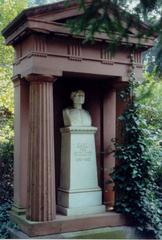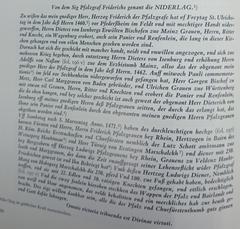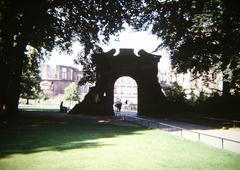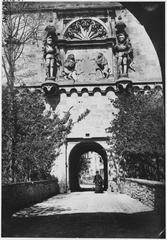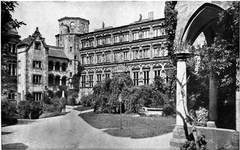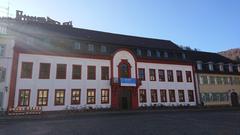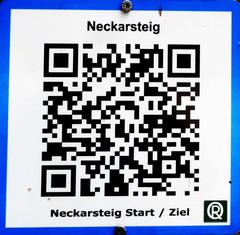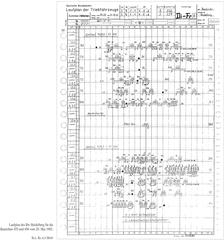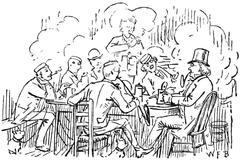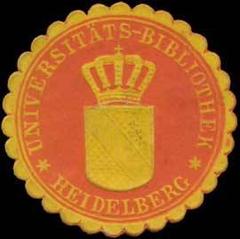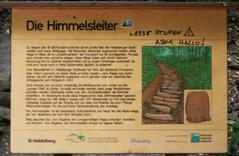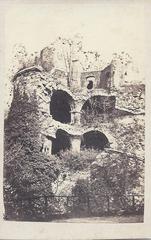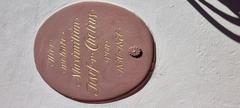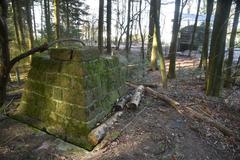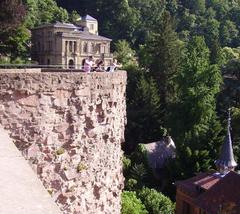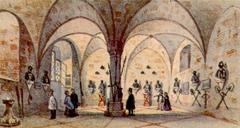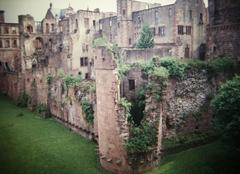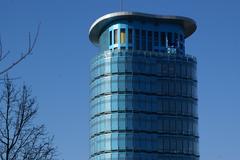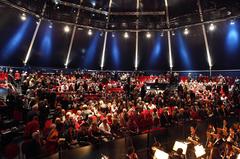Sammlung Prinzhorn Visiting Hours, Tickets, and Heidelberg Historical Sites Guide
Date: 04/07/2025
Introduction: The Cultural Significance of Sammlung Prinzhorn
Located in Heidelberg, Germany, the Sammlung Prinzhorn Museum is a pioneering institution devoted to “outsider art”—artworks created by individuals with mental health experiences, primarily within psychiatric settings. Established after World War I by Dr. Hans Prinzhorn and Dr. Karl Wilmanns, the collection was originally conceived for scientific and art-historical research into the creative expressions of psychiatric patients. Over the years, it has evolved into the world’s most comprehensive archive of outsider art, with approximately 32,000 works spanning painting, drawing, sculpture, textiles, and manuscripts. The museum’s influence, cemented by Prinzhorn’s landmark 1922 book Bildnerei der Geisteskranken (Artistry of the Mentally Ill), has been profound, shaping movements such as Art Brut and impacting artists like Jean Dubuffet and Paul Klee.
Today, the museum offers visitors a rich exploration of the interface between art, psychiatry, and society. Housed on the Heidelberg University Hospital campus, it provides regular exhibitions, guided tours, and accessible facilities, making it a central stop for those exploring Heidelberg’s cultural landscape. Nearby attractions such as Heidelberg Castle and the Old Bridge further enhance the visitor experience.
This guide details the museum’s history, practical visitor information, current exhibitions, accessibility, ticketing, and travel tips, as well as ethical considerations and research opportunities. For the latest updates, consult the official Sammlung Prinzhorn website or the Metropolitan Museum of Art research center.
Contents
- Origins and Early Development (1919–1933)
- The Collection During the Nazi Era and Postwar Neglect (1933–1970s)
- Conservation, Expansion, and Public Recognition (1970s–2001)
- Establishment of the Museum and Modern Evolution (2001–Present)
- Highlights of the Collection
- Iconic Works and Artists
- Thematic Diversity and Materials
- Current Exhibitions (as of July 2025)
- Visiting Hours, Tickets, and Accessibility
- How to Get There
- Nearby Attractions and Travel Tips
- Ethical Considerations and Societal Impact
- Collection Research and Digital Access
- FAQs
- Conclusion and Recommendations
- Sources and Further Reading
Origins and Early Development (1919–1933)
The Prinzhorn Collection originated in the aftermath of World War I, during a period of changing attitudes towards mental illness and creativity. In 1919, Dr. Karl Wilmanns and Dr. Hans Prinzhorn at the Heidelberg University Psychiatric Hospital began soliciting artworks from psychiatric institutions across German-speaking Europe. By 1922, their efforts had amassed approximately 5,000 works from over 450 patients, including paintings, drawings, sculptures, and written texts (sammlung-prinzhorn.de; Wikipedia; tourism-heidelberg.com).
Prinzhorn’s dual background in psychiatry and art history allowed him to interpret these works not merely as clinical artifacts, but as vital expressions of human creativity. His 1922 book, Artistry of the Mentally Ill, became a foundational text for avant-garde artists and theorists, influencing the development of the Surrealist and Art Brut movements (sammlung-prinzhorn.de).
The Collection During the Nazi Era and Postwar Neglect (1933–1970s)
With the rise of the Nazi regime, the collection fell into misuse and obscurity. In 1938, selected works were featured in the “Entartete Kunst” (“Degenerate Art”) exhibition, used to stigmatize both modern art and individuals with mental illness (sammlung-prinzhorn.de; Wikipedia). After World War II, the collection languished in storage until it was rediscovered in the 1960s, when exhibitions resumed and its international significance was recognized (sammlung-prinzhorn.de).
Conservation, Expansion, and Public Recognition (1970s–2001)
The 1970s brought major conservation and cataloguing efforts, ensuring the collection’s preservation (Wikipedia). Artists such as Jean Dubuffet, inspired by the collection, helped popularize the concept of “Art Brut,” or raw art. The collection also began to include recent works by individuals with psychiatric experiences, steadily expanding its holdings (sammlung-prinzhorn.de).
Establishment of the Museum and Modern Evolution (2001–Present)
In 2001, the Sammlung Prinzhorn Museum opened in a renovated former lecture hall at the Centre for Psychosocial Medicine, Heidelberg University Hospital (sammlung-prinzhorn.de). This dedicated museum space enabled systematic curation, research, and public engagement.
The museum’s permanent exhibition, “From ‘Art of the Insane’ to Outsider Art,” displays about 120 works at any time, offering a representative sample of over 32,000 objects. Two or three special exhibitions each year address contemporary issues, such as the blurring lines between “normal” and “crazy,” exemplified by the 2025 show “normal#crazy. Contemporary History of an Eroding Difference” (sammlung-prinzhorn.de).
Highlights of the Collection
Iconic Works and Artists
Noteworthy artists include Else Blankenhorn, Franz Karl Bühler, Karl Genzel, Paul Goesch, Emma Hauck, August Klett, August Natterer, Agnes Richter, Joseph Schneller, Barbara Suckfüll, and Adolf Wölfli (sammlung-prinzhorn.de).
- August Natterer: Detailed pencil drawings with visionary scenes.
- Emma Hauck: “Letter pictures” featuring layered script and emotional intensity.
- Agnes Richter: Embroidered text-covered garments reflecting personal narratives.
Thematic Diversity and Materials
Subjects range from religious visions and fantastical landscapes to personal letters and everyday observations. Artists used whatever materials were available, including paper, cardboard, fabric, and found objects.
Current Exhibitions (July 2025)
Permanent Exhibition: “Art from the Edge – The Prinzhorn Collection”
Showcases key works and explores the historical context and evolving perception of outsider art.
Special Exhibition: “Voices Unveiled: Women Artists in the Prinzhorn Collection” (April–September 2025)
Highlights the often-overlooked contributions of female artists like Emma Hauck and Agnes Richter (Sammlung Prinzhorn – Aktuelle Ausstellungen).
Interactive Installations: Digital stations, audio commentaries, and educational programming are available (visitor information).
Visiting Hours, Tickets, and Accessibility
- Opening Hours: Tuesday–Sunday, 11:00–17:00 (last admission 30 minutes before closing). Extended hours on Wednesdays (until 20:00). Closed Mondays and certain holidays (visiting hours).
- Ticket Prices: Standard €8; reduced €5 (students, seniors, eligible groups). HeidelbergCARD holders receive 20% discount. Free or reduced entry for qualifying visitors with ID.
- Purchasing Tickets: On-site at the museum. Group visits (10+) require advance booking (tickets).
- Accessibility: The museum is largely accessible, but some historical areas may be limited. Contact the museum in advance for specific needs. Audioguides are available, but no Braille or tactile tours (accessibility info).
- Facilities: Museum café (Mon–Fri 10:30–14:00); print room with rotating displays.
How to Get There
- Public Transport: Bus lines 31 and 32, tram lines 21 and 24, stop near Voßstraße 2, 69115 Heidelberg.
- By Car: Limited parking at the university hospital. Public transport is recommended.
Nearby Attractions and Travel Tips
- Heidelberg Castle: Iconic Renaissance structure with panoramic views.
- Old Bridge (Alte Brücke): Historic stone bridge over the Neckar River.
- Altstadt (Old Town): Picturesque streets, cafes, and shops.
- Photographic Spots: Museum’s garden courtyard and riverbanks.
- Other Museums: Kurpfälzisches Museum, Heidelberger Kunstverein, Mark Twain Center.
- Tip: Combine your visit with a stroll along the Philosophenweg for city views.
Ethical Considerations and Societal Impact
Displaying art created by psychiatric patients raises important ethical questions. Many works were collected without consent, and the museum is committed to transparent, respectful curation (Mad in America). The collection challenges societal assumptions about mental health, creativity, and inclusion, and is a focal point for dialogue about dignity and representation (IBA Heidelberg).
Collection Research and Digital Access
The museum supports research and public engagement through digital archives and online exhibitions (digital collection). Scholars may request access to original works and archives for study.
Frequently Asked Questions (FAQ)
Q: What are the Sammlung Prinzhorn visiting hours?
A: Tuesday–Sunday, 11:00–17:00 (last admission 30 minutes before closing); extended hours on Wednesdays. Closed Mondays.
Q: How can I buy tickets?
A: At the museum entrance. Groups (10+) should book in advance.
Q: Is the museum wheelchair accessible?
A: Mostly, but some areas are limited. Contact in advance for special needs.
Q: Are guided tours available?
A: Yes, in multiple languages. Book in advance.
Q: Are photos allowed?
A: Yes, without flash, in designated areas.
Q: What other historical sites are nearby?
A: Heidelberg Castle, Old Bridge, Philosophenweg, and the Old Town.
Conclusion and Visitor Recommendations
The Sammlung Prinzhorn Museum is an essential destination for anyone interested in art, history, or the complexities of the human mind. Its exhibitions illuminate the resilience and creativity of individuals often marginalized by society, while its ongoing research and ethical commitment make it a model for thoughtful curation. Plan your visit by checking the official website, book a guided tour, and explore Heidelberg’s many historical and cultural sites. Enhance your experience with digital resources and the Audiala app, and stay updated via social media.
Sources and Further Reading
- sammlung-prinzhorn.de – Museum History
- Metropolitan Museum of Art – Prinzhorn Collection
- Public Domain Review – Hans Prinzhorn’s Artistry of the Mentally Ill
- Sammlung Prinzhorn – Current Exhibitions
- Sammlung Prinzhorn – Visitor Information
- Heidelberg Tourism – Prinzhorn Collection
- Heidelberg University Hospital – Sonderausstellung
- IBA Heidelberg – Prinzhorn Collection
- Mad in America – Ethical Debate
- ebrary.net – Prinzhorn Collection
